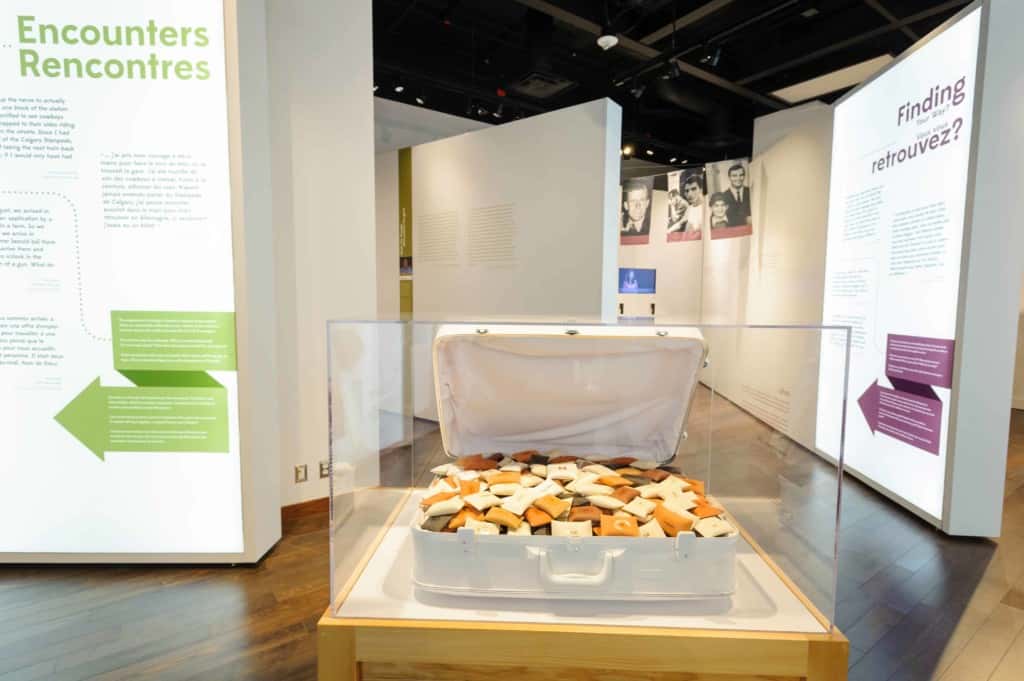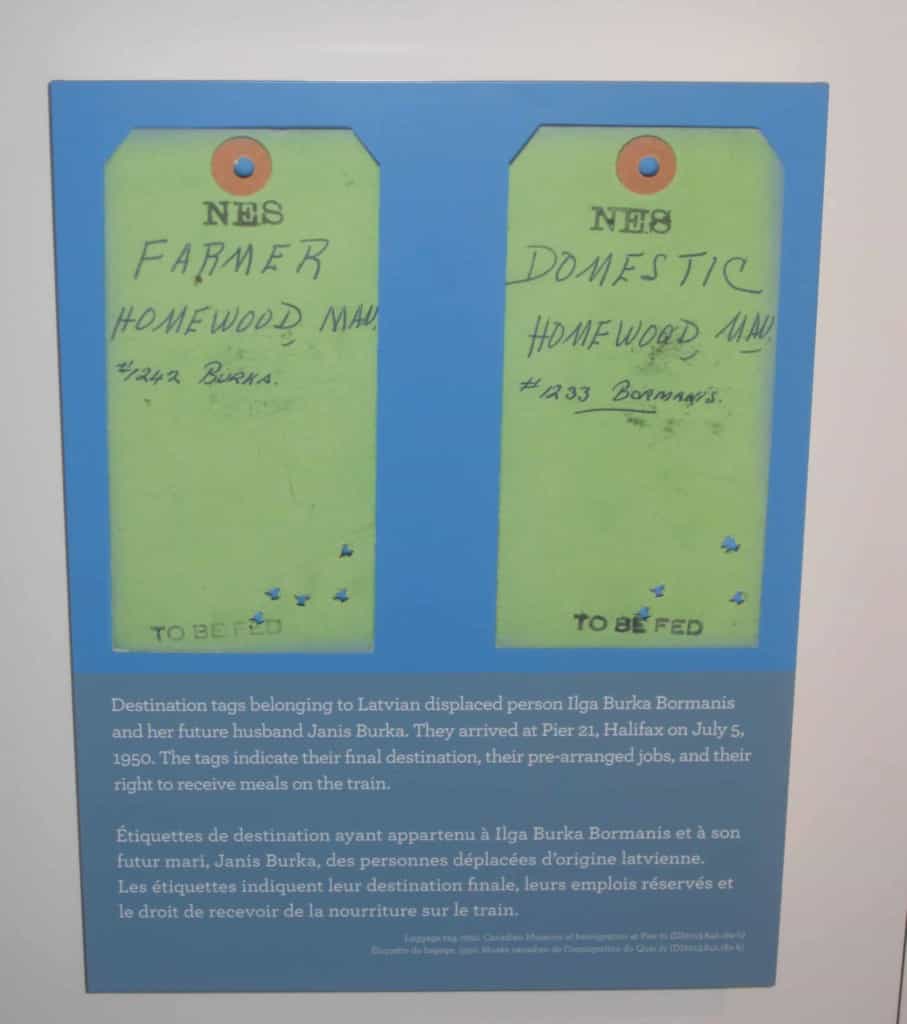Legislative Assembly hosts free exhibit
The Canada: Day 1 travelling exhibit at the Legislative Assembly Visitor Centre provides insight into an immigrant’s first day in Canada.
Produced by the Canadian Museum of Immigration at Pier 21 in Halifax, the free exhibit is a collection of immigration stories.
“For 50 years, Pier 21 was a major entry point,” explained Barbara Hilden, exhibits coordinator.
The initial disorientation experienced by newcomers is a common bond.
“That first day experience is something that everyone can relate to, even if you’re not an immigrant,” said Hilden.
My French immigrant father discovered venetian blinds on his first day in Canada, and was shocked when they suddenly rolled down. “There I was, just a scared kid,” said Dad. Used to small businesses, he was puzzled by the word “supermarket” on a door in Montreal.
The history presented by the exhibit is interesting and enjoyable.

“I need you by my side,” read a ticket on an old suitcase.
Missing are sensitive topics, such as discrimination, exploitation, and assimilation. Canadian immigration policy during the 1930s was much different than it is now. As the Holocaust gained momentum in Germany, Canada allowed a mere 5,000 Jews into the country. Between 1930 and 1935, Canada deported over 28,000 male and female “foreigners” because they were radicals or had asked for relief.
During the post-war wave of immigration, landed immigrants were contracted to fill jobs that Canadians wouldn’t do. Sparse attention was given to background as they were often placed on year-long contracts to work on farms, serve in homes, or build railways.
In 1951, my father was put on a train to a farm north of Quebec City despite a classical history degree, a working knowledge of English, and no farming experience. He was ticketed with his designated occupation, name, country, and instructions that he was “to be fed.”
“You don’t know anything about farming do you?” the farmer asked Dad in his strange French. To his great luck, Dad had an ethical employer, as lack of government followup meant many immigrants were badly exploited.

Growing up in Toronto’s Little Italy, I was on the lower end of a culture where discrimination and assimilation was normal. At least our European taste buds could avoid the awful soft, mushy Canadian bread with the salted butter! My father’s Anglo-Saxon co-workers were concerned he was raising a family in such a place. “Think of your children,” they said. In reality, our neighbours were often hard-working, family-oriented, conservative people escaping scratch-and-starve farms in southern Italy. Euclid Street sported huge automobiles as upwardly mobile families traded their donkeys for a car.
During elementary school, I was instructed to sing God Save the Queen, salute the Union Jack, and say the Lord’s Prayer. A portrait of the Queen hung in the classroom. Few students were of Anglo-Saxon descent and some not Christians. I was sent to a speech class not because I had a speech defect, but because my English was French accented. Most teachers meant well, but I got the message that my French culture was something to escape.
That was my experience as a child of an immigrant, and I’m sure every new Canadian had a different experience.
The Canada: Day 1 exhibit runs until Dec. 4.
Canada: Day 1
Borealis Gallery
9820 107 St
Free, non-ticketed event
Monday, Wednesday, Friday: 10 a.m.-5 p.m.
Thursday: 10 a.m.-8 p.m.
Weekends and holidays: noon to 5 p.m.
Featured Image: The exhibit runs until Dec. 4 at the Legislative Assembly. | Legislative Assembly of Alberta







